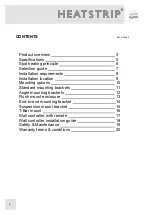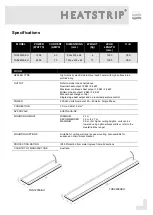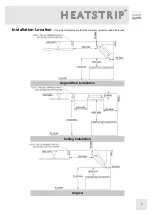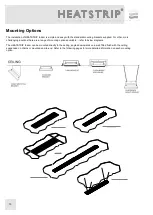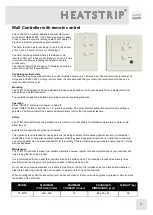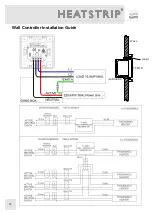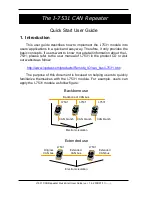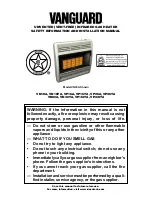
3
Product Overview
Why choose Heatstrip electric radiant heaters for your indoor area?
As there is can be significant air movement in an open indoor area, many conventional heaters rely on convection heating
which works by heating the surrounding air. This can be quite impractical for these areas, as this heated air can easily be
lost, or naturally move to areas where it becomes ineffective (eg. high ceilings). Radiant style heaters transfer heat directly
to objects through infra-red waves.
Whilst convection heaters heat the air in between objects, radiant heaters heat the surface of the objects themselves.
HEATSTRIP electric radiant heaters are effective within uninsulated or hard-to-heat indoor area because they provide
targeted warmth directly to the people and objects in their path.
APPLICATION
THX THH THS
Indoor insulated areas: classrooms, offices, bathrooms, wet areas, drying rooms
X
√
√
Outdoor under cover: café, veranda, patio, balcony ceiling height 3m or less
√
√
X
Outdoor under cover: café, veranda, patio, balcony ceiling height up to 3.5m
√
X
X
Exposed outdoor area
√
X
X
Indoor open area: warehouse, factory, production areas, sports facilities
√
√
√
Indoor spot heating: above tables, assembly areas
√
√
√
There are 3 different ranges of products within the Heatstrip
product category. Each has a different temperature
specification, making them ideal for different applications. Below is a list of some common applications, to assist with the
selection of the most effective and efficient series. This is a general guide only, please refer to the Product Manual for
each product, for more information.
HEATSTRIP Design
(THH models) is a premium high temperature heater and is primarily used for outdoor rooms
where there is 1,2 3, or 4 enclosed sides or open indoor area’s, with an ideal mounting height of 2.3m to 2.7m.
HEATSTRIP Max
(THX models) is an ultra high temperature heater used for uncovered or open areas with a
mounting height of 2.4 m to 3.5m.
HEATSTRIP Indoor
(THS models) is a medium intensity heater used for protected indoor applications.
Above:
radiant heat is directed downwards to where it
is required, and can be zoned to heat only those areas that are
occupied
.
Above:
convective heat can be lost in uninsulated
areas or naturally rise towards the roof in high ceiling


